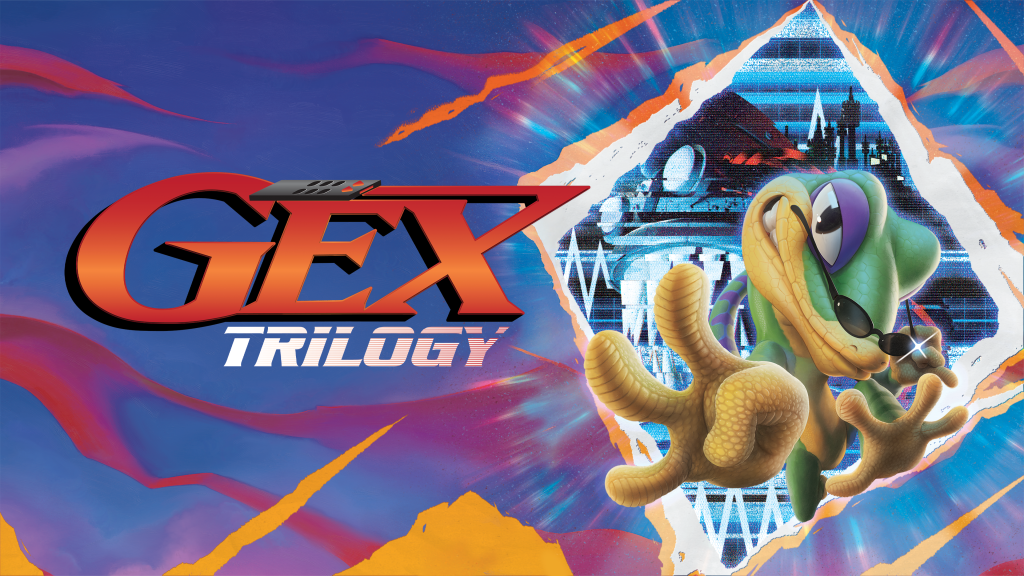
Check out our latest products
After almost 30 years, it is once again Tail Time. Everyone’s favorite gecko before the GEICO one, Gex, is returning to modern platforms in the Gex Trilogy. Do these three titles hold up better today with quality of life improvements? Or is Gex better left relegated to the past? Onwards to the review!
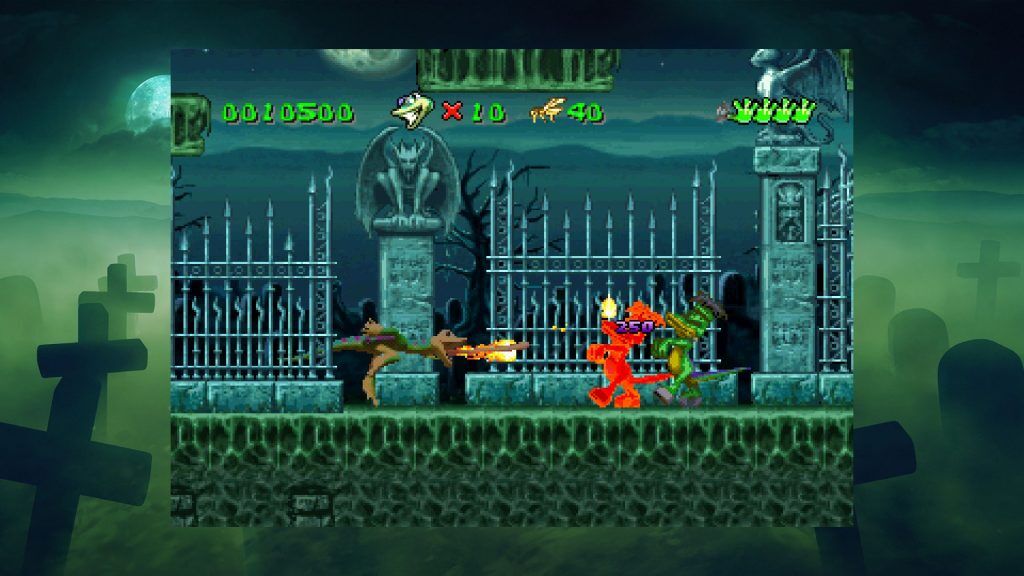
It’s Tail Time!
We’ll start with the original Gex, which initially appeared on the 3DO before being ported to the Sega Saturn and Sony PlayStation. This is the only one of Gex’s adventures in 2D. The plot is paper thin: Gex is sucked into his television by the nefarious Rez, who wants to turn him into the Media Dimension’s mascot. There are different channels Gex must traverse to make it to Rez, including the Cemetery, New Toonland, and Kung Fuville, to name a few. Each channel has a certain number of levels to complete, each with its own remote that must be collected before exiting to unlock the next level. Gex’s main moves are a tail attack and a curled tail butt bounce he can do in the air. Throughout each stage, Gex can eat circular power-ups to grant him abilities like a flame shot, invincibility, and super speed. Cameras can be found in levels that grant you a checkpoint. Some tapes can be found in certain stages that give you a password, too, though you can save the game at any time in this re-release.
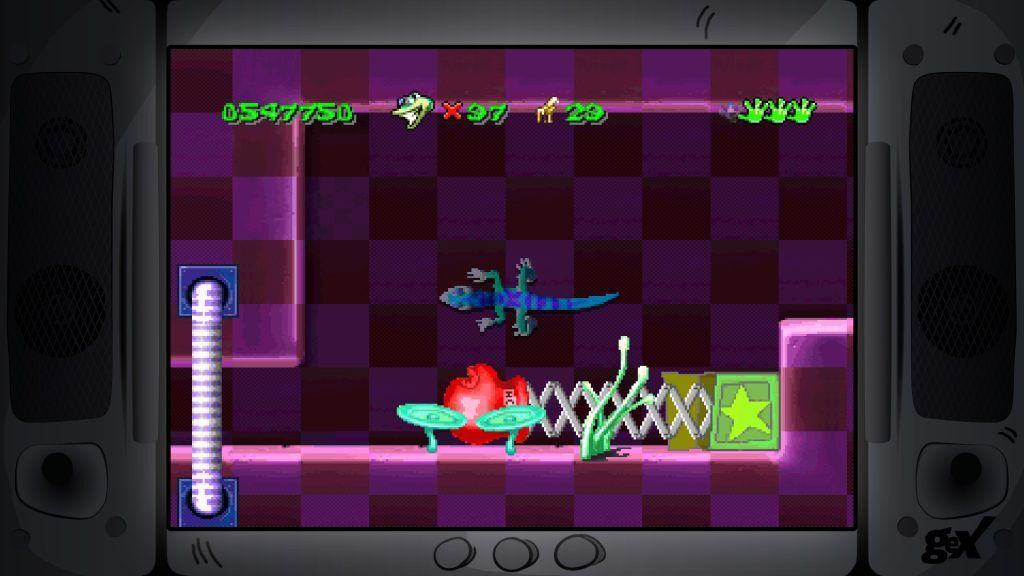
Gameplay-wise, Gex is a mixed bag. You can hold a button to run, but it’s a bit unwieldy to use (I felt like I overshot my jumps a lot). Enemies have weird hit boxes, and it can be hard to gauge how far away you can safely attack them with your tail. You can climb around many surfaces, both in the foreground and background. While this is quite useful, sometimes it can be hard to determine which backgrounds can be climbed and which can’t. Gex is a chatterbox, too. While some one-liners might give you a chuckle or two, they are soon repeated constantly, leading to great annoyance. There is a good amount of creativity in some of these worlds, but the stages are very similar-looking, and the art style may not be everyone’s cup of tea. For me, this is the weakest of Gex’s games.

Time to Enter the Gecko…IN 3D
Gex: Enter the Gecko pushed the titular character into the third dimension. Rez is after Gex once more, though this time around, Gex is only persuaded to go after him once government officials give him some cold, hard cash. This time around, Gex feels a little better to control, though he is still too floaty for my liking. He has all his moves from the first game, in addition to a long jump that feels more stilted than Mario’s from Super Mario 64, a game that came out two years prior. Thankfully, Gex’s quips are more varied this time around, but be prepared to hear some variation of “It’s Tail Time” at least 100 times. The camera is also terrible by default, constantly blocking your view and swinging around, so change it to manual as soon as possible to alleviate this issue.

There is a kind of hub world that Gex wanders through to access different worlds, represented by giant television screens. Each world has three remotes you can obtain, along with a description and a short clip showing you where it is. Gex can also find hidden remotes and can grab an extra one by collecting 100 collectables in each stage. These collectables are pretty cool, since they change appearance multiple times as you get closer to 100 collected. In Toon TV, for example, they change from Carrots to Spinach Cans to TNT Plungers. It is very inventive! Gex also goes through numerous costume changes that fit the theme of the world, including a rabbit costume, a space suit, and a disco suit. It can be confusing to know where to go, though, as some areas feel quite interconnected. Regardless, I ended up liking this Gex adventure the most.
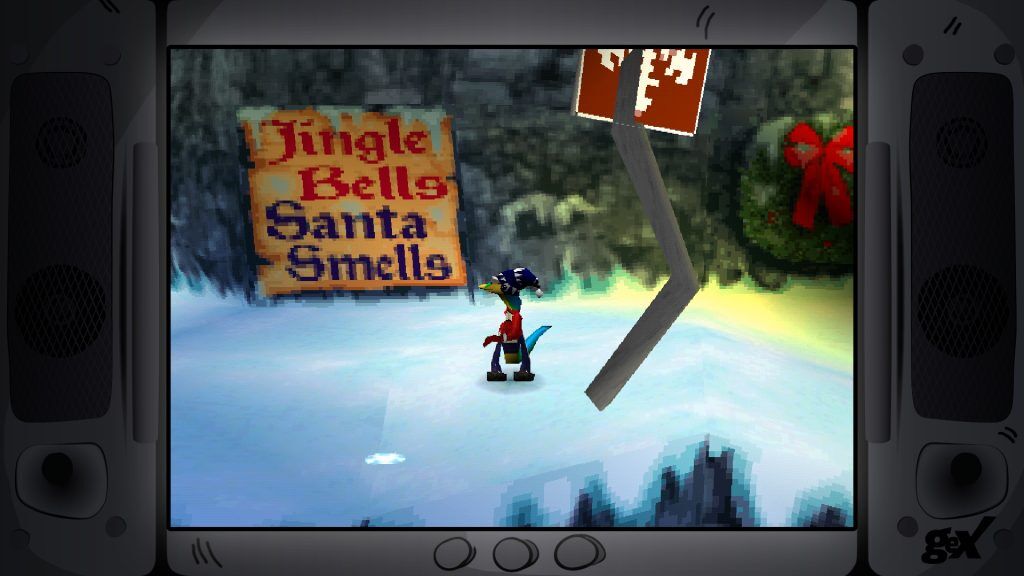
3D Once More, With Feeling
Gex 3: Deep Cover Gecko is the last game in the collection. Gex springs into action this time because a real-life actress from Baywatch has been kidnapped and contacts him for help. The hub world is now a sprawling mess. I don’t know why the developers changed it because the second game did it right the first time. Also, the collectables don’t change appearance and are now just generic Fly Coins. There are regular coins you can collect, as well, that open up bonus areas. Be warned, these areas are timed and have the most annoying ticking clock sound I have ever heard in a videogame.
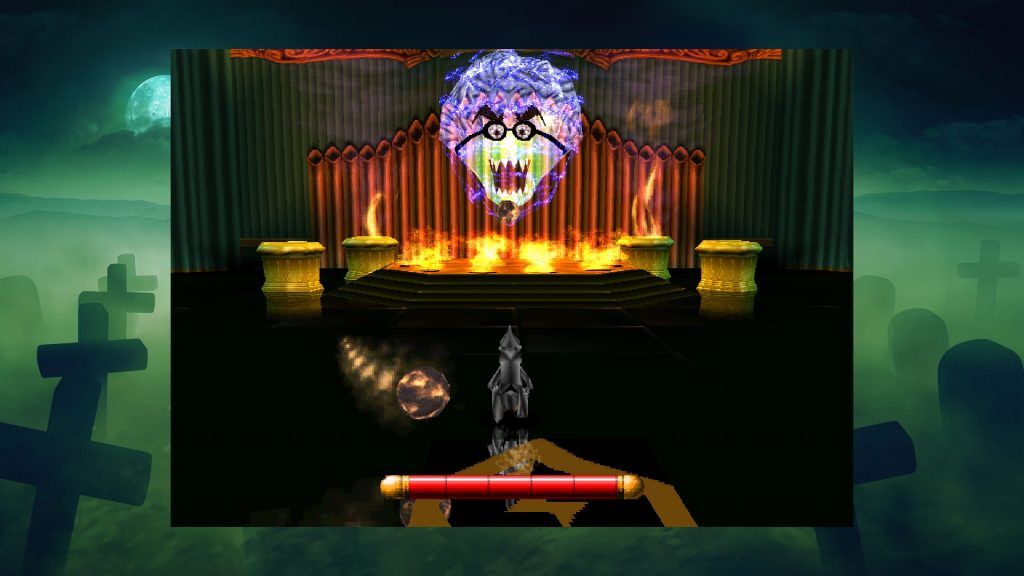
To the game’s credit, though, levels feel more connected than ever before. Paths are clearer to navigate, and there are times when Gex will don a snowboard or tank to break up the standard platforming. Bosses are more fun to battle, too, seeing as they were very basic in the two titles prior. Gex 3: Deep Cover Gecko does feel like Gex: Enter the Gecko, but with more stuff to do. You might end up liking it more because of that, but I felt the second game had just the right balance.
The Gex Trilogy is an Adequate Experience
Overall, the Gex Trilogy is a decent package of platformers. Limited Run did a good job incorporating the Carbon Engine, with enhancements like rewind and save states minimizing each game’s more frustrating aspects. The devs do a good job letting players know they tried to keep the titles as authentic as possible, even the more problematic parts, which is the best way to go about it. There are also a lot of extras, including various commercials that aired for the games back in the day, an interview with Gex’s voice actor, Dana Gould, and artwork galore. Overall, though, I felt the platforming was just alright throughout all three titles. They never reach the heights of Super Mario 64 or Banjo-Kazooie, but I am glad they are available on modern systems. All videogames deserve to be preserved, especially the ones that are accurate time capsules of the 90s.
Games so 90s it hurts
- Gameplay 6/10
- Graphics and Sound 6/10
- Replayability 6/10
6/10
Summary
The Gex Trilogy is a product of the 90s, almost to a fault. Though Limited Run and its Carbon Engine do a great job presenting these games with quality-of-life features, the core of each title is average.

![[2025 Upgraded] Retractable Car Charger, SUPERONE 69W Car Phone Charger with Cables Fast Charging, Gifts for Men Women Car Accessories for iPhone 16 15 14 13 12, Samsung, Black](https://i1.wp.com/m.media-amazon.com/images/I/61SaegZpsSL._AC_SL1500_.jpg?w=300&resize=300,300&ssl=1)



![[True Military-Grade] Car Phone Holder【2024 Stronger Suction & Clip】 Universal Cell Phone Holder for Car Mount for Dashboard Windshield Air Vent Long Arm Cell Phone Car Mount Thick Case,Black](https://i2.wp.com/m.media-amazon.com/images/I/715PBCuJezL._AC_SL1500_.jpg?w=300&resize=300,300&ssl=1)
![[エレコム] スマホショルダー ショルダーストラップ 肩掛け ストラップホールシート付属 丸紐 8mm P-STSDH2R08](https://i3.wp.com/m.media-amazon.com/images/I/51BMFf06pxL._AC_SL1500_.jpg?w=300&resize=300,300&ssl=1)







